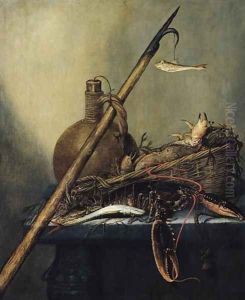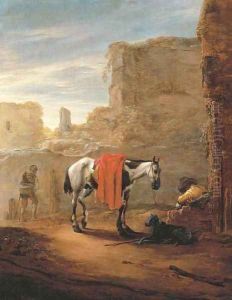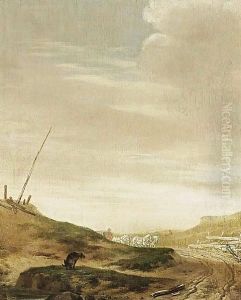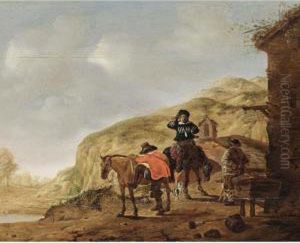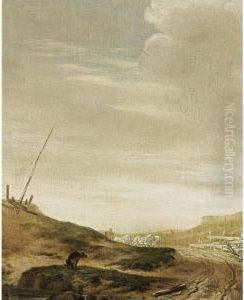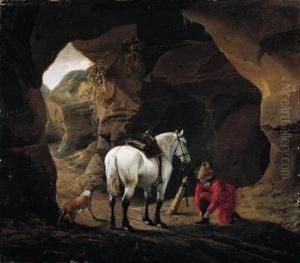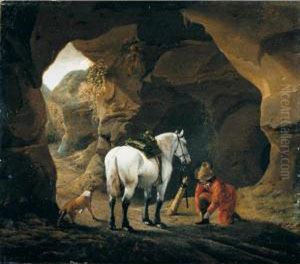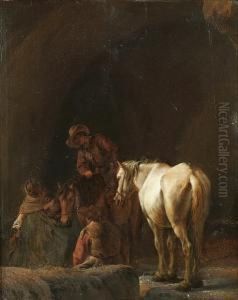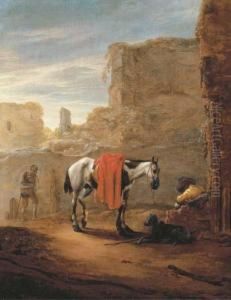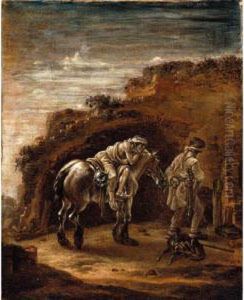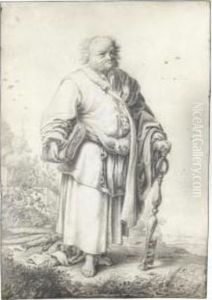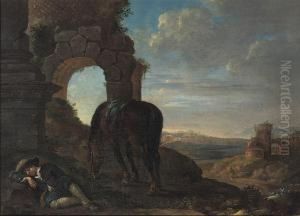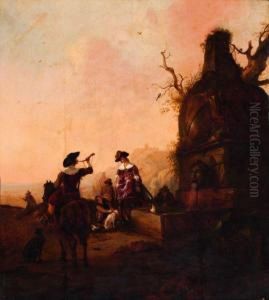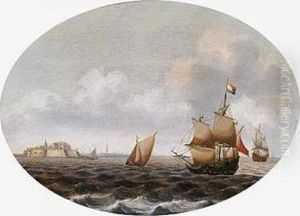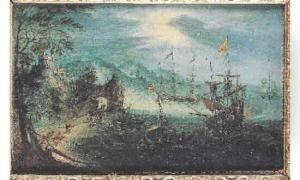Pieter Cornelisz. Verbeeck Paintings
Pieter Cornelisz. Verbeeck, born in 1610 in Haarlem, Netherlands, was a notable artist of the Dutch Golden Age, a period renowned for its incredible proliferation of artistic talent and innovation. His life and career were emblematic of the era's cultural and artistic vibrancy.
Verbeeck was primarily known for his skill in painting landscapes and genre scenes, capturing the essence of Dutch life and environment with a remarkable attention to detail and a palpable sense of atmosphere. His works often depicted everyday scenes, imbued with a sense of calm and a meticulous portrayal of light and shadow, which would later influence the development of landscape and genre painting in the Netherlands.
Despite his considerable talent, Verbeeck's life was not without its struggles. Little is known about his early life and training, but it is believed that he was a student of the Haarlem school, which was a leading center for painting in the Netherlands during the 17th century. This school was known for its emphasis on realism and the study of nature, principles that can be seen throughout Verbeeck's work.
Throughout his career, Verbeeck was recognized by his contemporaries for his contributions to Dutch art, though his fame did not reach the heights of some of his peers. His works were appreciated for their technical skill and their ability to capture the serene beauty of the Dutch landscape and the simplicity of its people's lives.
Pieter Cornelisz. Verbeeck's life came to an end in 1654, in Haarlem. Though he may not be as widely recognized today as some of his contemporaries, his works remain an important part of the Dutch Golden Age's artistic legacy, reflecting the period's aesthetics and values. His paintings continue to be studied and admired for their craftsmanship and historical value, offering insight into the culture and society of 17th century Netherlands.
